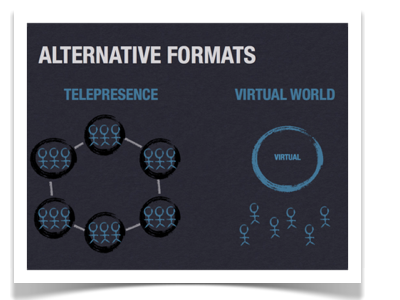Are You Multiplying The Value of Your Meetings?
When you get ready to start planning your next meeting, is your plan to make an incremental change or take a giant leap?
My guess is incremental change. And, I bet you then go look for new ideas that you can include in your event. Right now you might be excited about QR codes, mobile apps. and social media.
I have a question for you.
What would it mean to your organization if you could multiply the value of your meetings and events?
Think about that question for a minute.
How would your attendees feel if you sent them home with 3X the educational value for the same cost/effort? How would your leadership teams feel if you could generate 3X the output from annual top management meetings for the same cost/effort? How would your sponsors feel if you could send them home with 3X the qualified leads for the same cost/effort? How would your employees feel if you included them in 3X the important decisions affecting the future of your company?
I bet your stakeholders would be ecstatic, if you delivered a giant leap in meeting performance. And I bet they would throw you a ticker tape parade and put your name in lights.
The Big Question
Here’s the big question: How do you do it? Which part of your meetings need rethinking in order to multiply the value?
This is a tough one. If you talk to 1,000 people, you will get 1,000 different answers.
Some Answers
Maarten Vanneste, author of Meeting Architecture, created a tool called the Meeting Support Matrix that offers a super-simple way to look at what you are doing in your event, identify gaps and make adjustments in your strategy. This 3X3 matrix allows you to look at your event across time and by “core” objective. (Download)
At BizBash’s Rethink Forum, Mary Boone and Flemming Fog talked about starting with objectives and then using group processes with technology to deliver results. They shared several examples. (Learn More)
Bottom Line
Ask yourself these questions: (A) what would it mean to your organization, if you could multiply the value of events? (B) How would you measure it? (C) Where would you invest time and energy in rethinking your meetings? (D) For those of you that are already doing this – what is working and where are you running into challenges?












